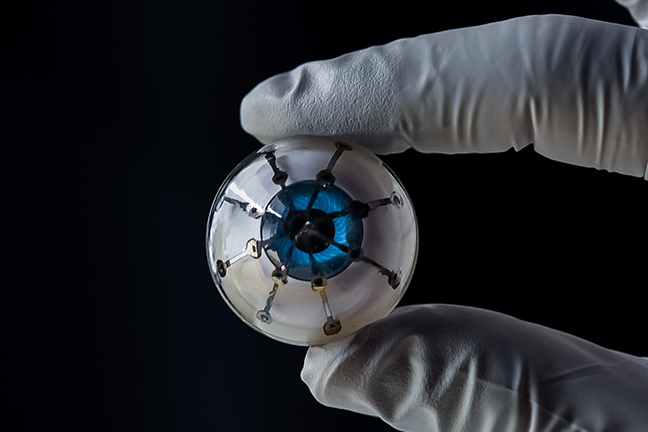Researchers from the University of Minnesota 3D printed a set of light receptors on a hemispherical surface in order to create a bionic eye prototype.

This bionic eye prototype is very similar to human eye, and yet, it resembles to a science fiction creation. As technology advances at a rapid pace, it is not a surprise, that researchers try to recreate every organ of the human body.
However, this time, just as in other innovations, this research began when a researcher tried to find out a solution to a personal problem. The mother of Michael McAlpine, mechanical engineer at the University of Minnesota, lost her vision during a surgery.
The mechanical engineer said: “My mother is blind in one eye, and whenever I talk about my work, she says, ‘When are you going to print me a bionic eye?”
3D printed light receptors
Light receptors are placed at the back of the human eye, accommodating corneal fluids. However, the light receptors of an artificial eye do not require any fluid medium to enable or facilitate vision.
Despite the numerous of achievements of the engineer and his team, this research presented a big challenge: 3D printing on curved surfaces. Indeed, the ink tends to flow on the bent areas rather than sticking to them.
To overcome this obstacle, the team used a base ink of silver particles on the hemispherical dome. With this method, the ink did not move and dried in a uniform way. Thereafter, semiconducting polymer materials for printing photodiodes on the surface of the dome were used. They enable to convert light into electrical signals that can be processed and turned into actual images.
Until now, results show that the process is 25% efficiency in converting light signals into electrical signals.
“We have a long way to go to routinely print active electronics reliably, but our 3D-printed semiconductors are now starting to show that they could potentially rival the efficiency of semiconducting devices fabricated in microfabrication facilities. Plus, we can easily print a semiconducting device on a curved surface, and they can’t.” McAlpine said.
For further information about 3D Printing, follow us on our social networks and subscribe to our newsletter
Would you like to subscribe to 3D Adept Mag? Would you like to be featured in the next issue of our digital magazine? Send us an email at contact@3dadept.com
//pagead2.googlesyndication.com/pagead/js/adsbygoogle.js
(adsbygoogle = window.adsbygoogle || []).push({});





